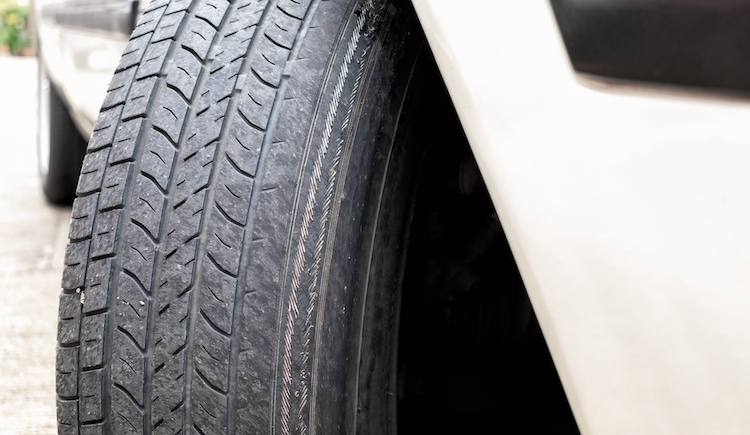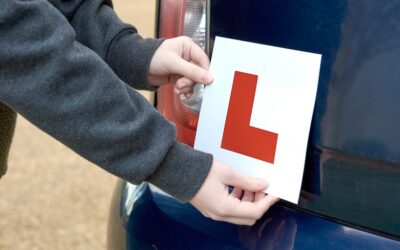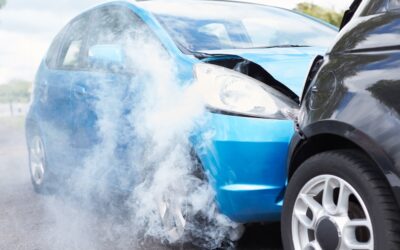Tyre safety is a matter of life and death.
Tyre wear on outside edge – is it legal?
The legal minimum tyre tread depth in the UK is 1.6mm, which must be in a continuous band around the middle three quarters of each tyre, leaving some allowance for the very edges.
But this is just the minimum! Some road safety experts believe that you’ll only be truly safe if you have a minimum tyre tread depth of 3mm.
A sufficient tread depth will give you good traction and stopping speeds you can depend on. But if you let your tyres get worn or degraded, you can expect less traction, greater stopping distances, and an increased risk of life-threatening things like aquaplaning and blowouts.
You should get into the habit of checking the state of your tyres at least once a fortnight, and before you set out on any long journeys.
Why are my tyres worn on the outside edge?
Tyre wear on the outside edge could indicate something is wrong, such as:
- Under-inflation or leaks
If your tyres are worn on the inside and outside edge, they could be under-inflated or leaking. This could cause the edges of your tyres to have more contact with the road than usual. - Taking corners too fast
Cornering too fast can put more pressure than expected on the edges of your tyres. Try slowing down both for your safety and your tyres. - Wheel alignment
Uneven wear could be due to misaligned or balanced wheels. You can take your car to a garage to check your alignment over. - Suspension issues
Uneven wear can also indicate that you have an issue with or worn suspension.
Have you heard of the 20p test?
If the tread of a tyre is deep enough to cover the outer band of a 20p test, then the tyre treads are of the legal depth. But if you can see any of the outer band of the 20p, then your tyres have worn beyond the legal limit. This means it’s time to get them changed.
But what would happen if you didn’t immediately get your tyre changed? What does a really unsafe tyre look like? And what other signs of wear and tear should you look out for when inspecting your tyres?
To help you ensure your tyres are always in good nick, make sure your tyres are within the legal and recommended limits.
How else to check the condition of your tyres
As well as wear on the outside of your tyres, you also need to check the condition of your tyres all over. Make sure you check them for:
- Bald Tyres
A bald tyre is a tyre with significantly worn treads. Tyre treads provide a good grip on the road and a reliable stopping distance. But if you try and drive with a bald tyre, you’ll skid, slide, and it’ll take a terrifyingly long time to brake.
- Tyre Bulge
If a tyre’s sidewall gets weakened, a bulge can appear. This can be caused by a number of things, such as driving over potholes, mounting kerbs too quickly, and driving too fast over speed bumps. If left untreated, tyre bulges can cause blowouts. Trust us – you don’t want your tyre to suddenly explode while you’re driving. Be on the lookout for bulges when checking your tyres. And remember that they can form on either side of the tyre – don’t just check the outer edge!
- Cracks and Tears
Obviously, this tyre isn’t going to be much use. Of course you’d change a tyre immediately if you found it in this condition. But this is an especially bad example. The truth is that any crack or tear of any size is going to have a negative impact on your stopping distances and traction. And like bulges, cracks and tears make blowouts more likely.
What Are the Penalties for Having Illegal Tyres?
If you’re caught driving with unsafe tyres, you’re looking at three penalty points and a fine of £2,500.
If you’re involved in an incident while driving on unsafe tyres, it could invalidate your car insurance claim. This, plus the serious fine, will leave you seriously out of pocket. No matter how much it might cost you to keep your tyres in good condition, it will always be a price worth paying.
Because unsafe tyres make it significantly more likely that you’ll be involved in a serious accident. A hefty fine is bad enough, but you really cannot put a price on your life, or the life of others.




